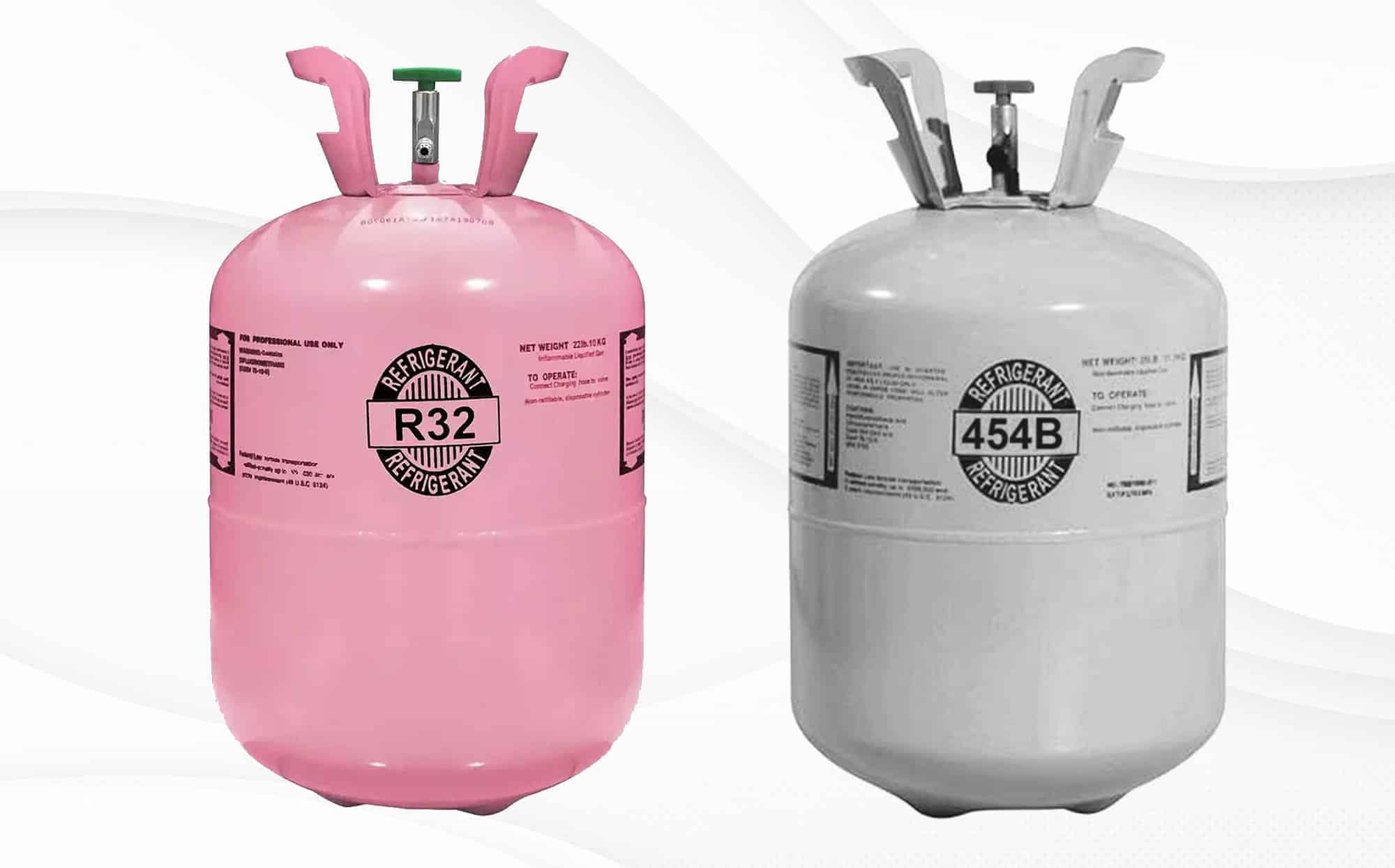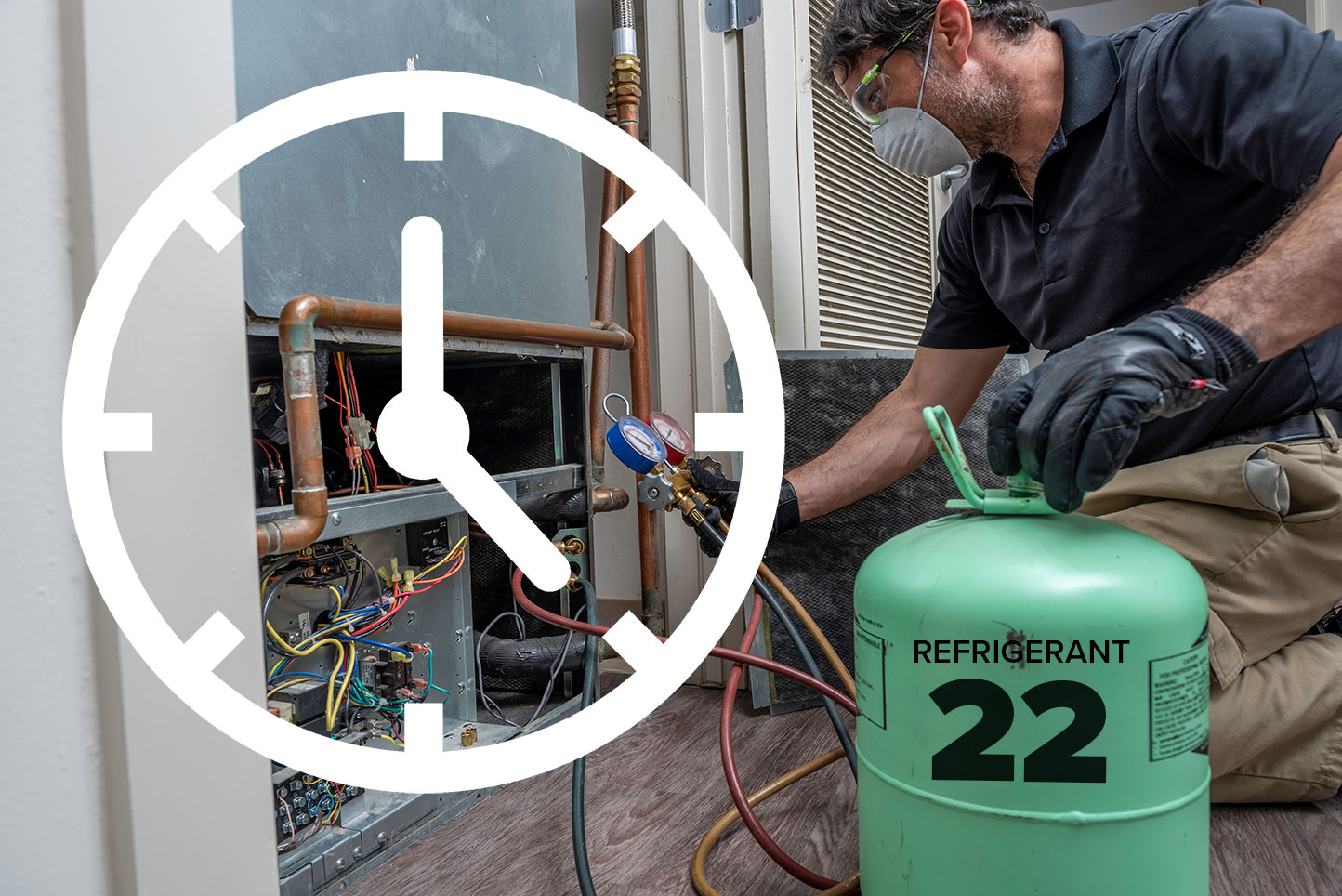As 2025 concludes, the HVAC industry has had significant changes driven by new government-mandated refrigerant regulations. These changes have reshaped the way air conditioning systems operate, with their objective to reduce environmental impact and promote sustainability.
At Smylie One Heating, Cooling, and Plumbing we want you to understand how these changes in refrigerant have affected you.
Why the Change?
The primary driver behind the 2025 refrigerant changes is the ongoing effort to reduce greenhouse gas emissions and combat climate change. Traditional refrigerants, such as R-410A, and R-22 have been found to have a high Global Warming Potential (GWP). This means that when these refrigerants are released into the atmosphere, they contribute significantly to global warming.
To address this issue, the Environmental Protection Agency (EPA) and other regulatory bodies worldwide are phasing out high-GWP refrigerants in favor of more environmentally friendly alternatives.
The New Refrigerants
Starting in 2025, the HVAC industry will shift toward using refrigerants with a lower GWP (Global Warming Potential) Among the most discussed replacements are R-32 and R-454B. These refrigerants perform similarly to traditional refrigerants like R-410A but with a significantly lower environmental impact.
R-32: Already used in many countries, R-32 has a GWP of around 675, which is significantly lower than R-410A’s GWP of 2,088. It’s more efficient, requires less refrigerant charge, and has better heat transfer properties, making it an attractive option for manufacturers and consumers alike.
R-454B: Another alternative, R-454B, has an even lower GWP of 466, which is a 75% reduction compared to R-410A. It’s being adopted as a replacement for R-410A in new air conditioning systems. R-454B offers similar efficiency and capacity but has a much smaller environmental footprint.
Impacts on the HVAC Industry
The transition to these new refrigerants will have a broad impact on the HVAC industry. Manufacturers will need to redesign equipment to be compatible with the new refrigerants, which may involve changes in system components, safety standards, and overall design.
This transition will likely lead to a phase-out of older systems that rely on R-410A, making way for more environmentally friendly options.
New residential and light commercial equipment using R-454B began to be manufactured and sold starting January 2025.
The shift will require additional training and certification for HVAC technicians to handle the new refrigerants safely and effectively. While more eco-friendly, these refrigerants can be more flammable or operate at different pressures, requiring updated safety protocols and handling procedures.
What Homeowners Need to Know For New Equipment Purchases
For homeowners, the 2025 refrigerant changes mean new air conditioning systems purchased from now on will likely use R-32, R-454B, or other low-GWP refrigerants. While this transition is a positive step for the environment, it does raise a few considerations:
Cost: New systems using the updated refrigerants may be more expensive initially due to the costs associated with new technology and manufacturing changes. However, these systems are also expected to be more efficient, potentially leading to lower energy bills over time.
Availability of parts and service: As the industry moves away from R-410A, parts and services for older systems may become less available or more expensive. Homeowners with existing R-410A systems should plan for this eventuality and consider whether upgrading to a new system might be more cost-effective in the long run.
Environmental impact: By choosing a system that uses a low-GWP refrigerant, homeowners can contribute to reducing greenhouse gas emissions. This aligns with broader global efforts to combat climate change and protect the environment for future generations.
Installation: Installation of R-454B equipment is restricted to new systems. Existing, older systems which have R-410A or R-22 systems cannot use R-454B. You can not drop in the new refrigerant into an older system.
Leak Detection and Mitigation: New equipment must come from the factory with built-in leak detection sensors. If a leak is detected in the system, it will trigger a mitigation response, such as activating a fan to disperse the refrigerant below flammable concentrations.
Component Compatibility: All components, including compressors, expansion valves, and electrical components, must be specifically designed for A2L refrigerants.
The 2025 government-mandated refrigerant changes represent a significant shift in the HVAC industry, driven by the need to reduce environmental impact and promote sustainability.
While transitioning to low-GWP refrigerants like R-454B will require adjustments from manufacturers, technicians, and homeowners alike, the long-term benefits are clear.
By embracing these changes, the HVAC industry and consumers can play a crucial role in mitigating climate change and moving toward a more sustainable future. As 2025 draws closer, staying informed and prepared for these changes will be essential for anyone involved in or relying on AC systems.
The Benefits of Updating Your HVAC System
Here are key reasons why homeowners should consider updating their HVAC systems to use R-454B refrigerants.
Environmental responsibility: R-454B have significantly lower Global Warming Potential (GWP) than older refrigerants like R-410A, reducing your home’s carbon footprint.
Energy efficiency: Systems using R-454B are generally more energy-efficient, which can lower your monthly utility bills over time.
Future-proofing: Upgrading now ensures compliance with future regulations and avoids potential issues with obsolete R-410A systems as they are phased out.
Improved system performance: These new refrigerants offer better heat transfer properties, which can enhance the overall performance of your HVAC system.
Availability of parts and service: As older refrigerants are phased out, parts and service for R-410A systems will become more expensive and harder to find. Upgrading now avoids these future challenges.
Long-term cost savings: While initial costs may be higher, the improved efficiency and reduced environmental impact can lead to long-term savings on energy and maintenance.
Increased home value: Modern, environmentally friendly HVAC systems can be a selling point, potentially increasing your home’s market value.
Compliance with new standards: New HVAC systems using R-454B are designed to meet the latest safety and environmental standards, ensuring your home stays up to date.
Schedule HVAC Replacement with Smylie One
If you’re ready to get ahead of the HVAC refrigerant changes, give Smylie One a call today for all of your HVAC comfort needs! Smylie One services all of Cuyahoga, Geauga and Lake Counties.



